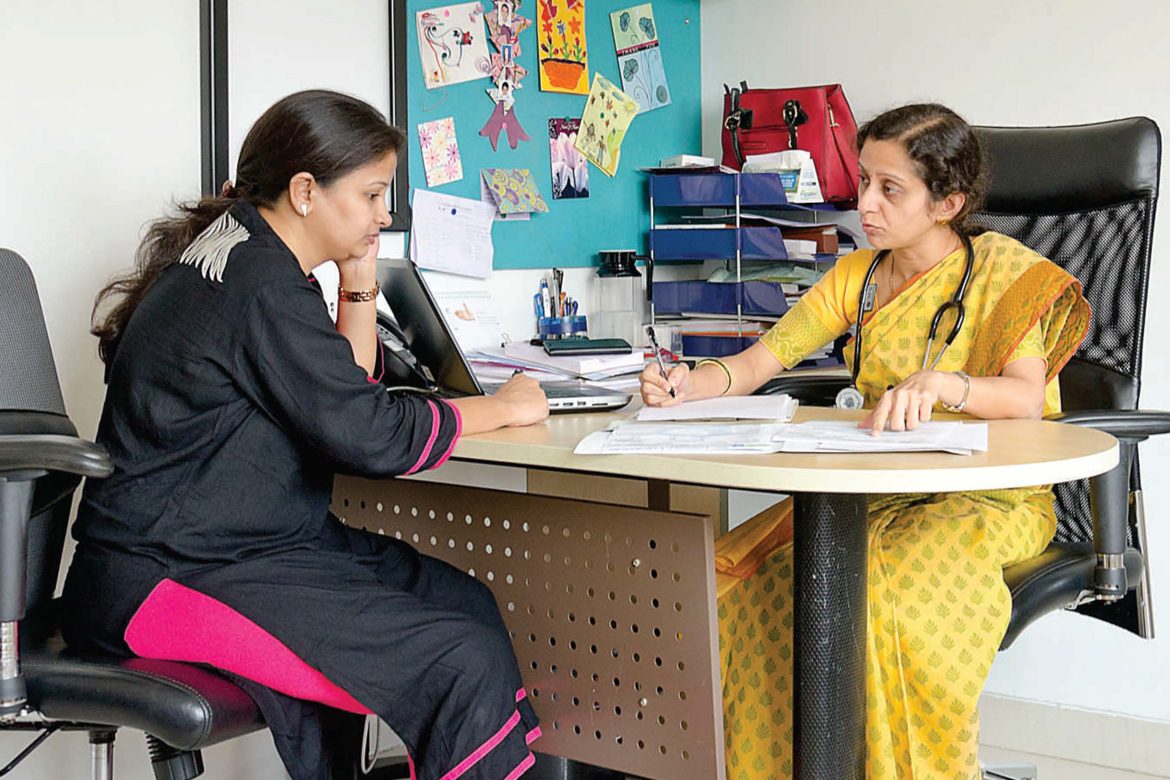Background
A 21-year-old unmarried girl was referred for primary amenorrhoea. She had noticed breast development around 12 years of age, but no axillary or pubic hair development and no menses noted till date. She was evaluated by a gynaec at 18 years of age when blood tests had showed normal FSH LH Thyroid functions and prolactin and USG showed rudimentary uterus and absent ovaries. She was given a 3 months course of E+P pills but had no withdrawal bleed. She was lost to follow up thereafter.
Diagnosis
On clinical examination, she was tall and overweight with a BMI of 28. Blood pressure and pulse were normal. She did not have a goiter, galactorrhoea, acne or hirsutism or clinical features of Cushings syndrome. She was Tanner stage B5 Pl with no axillary hair. Voice was high pitched and feminine. External genitalia were normal female phenotype with estrogenised vagina and no clitoromegaly.
We evaluated her with hormonal profile which showedFSH, LH of3.4 and4.5, normalProlactin and thyroid profile. Estradiol was normal with testosterone 400ng/ dl (NR 6-86 ng/ dl for females, meaning high for a girl with no acne or hirsutism). Di hydrotestosterone was elevatedlO00pg/ml (NR 24-368 for females, 250-990 for males). However, T: DHT ratio was normal. Karyotype showed 46 XY. USG pelvis did not show any uterus or ovaries but gonad like structures were identified in inguinal canals bilaterally. This established a diagnosis of complete androgen insensitivity syndrome in a 46XY genotype.
Management
As she was brought up as a girl and she had all feminine features, we advised to continue with the female sex of rearing. However in view of the functioning gonads (testes) which were secreting testosterone, we advised on gonadectomy to prevent the risk of gonadal (germ cell) tumors. Post gonadectomy the patient needs to be put on estrogen therapy (without progestins as uterus is absent) to maintain bone density.
Discussion
Androgen insensitivity syndromes are a spectrum of disorders in genotypic males where the target cells fail to respond to circulating androgens. They can be classified as MAIS (minimal androgen insensitive syndrome) where the patient is phenotypic normal adult male with infertility, PAIS (partial androgen insensitivity syndrome) where genotypic males present with ambiguous genitalia and CAIS ( complete androgen insensitivity). CAIS results from complete inability of the cells to respond to androgens. It occurs in 46 XY males leading to feminization of external genitalia and prevents development of secondary male sexual characteristics. It is because of mutations in the Androgen receptor (AR). As a result, the testosterone produced by the functioning testes cannot act on the AR but is instead aromatized to estrogen which causes feminization. Gonads (testes) are undescended or partially descended into the inguinal canal. Internal male organs like epididymes, vas deferens and seminal vesicles and prostate are rudimentary or absent. Children affected by this condition are usually not diagnosed till the puberty period unless there is inguinal hernia or palpable gonads. Puberty onset occurs with thelarche (breast development) but absent pubic and sparse axillary hair. They are usually referred for evaluation of pr imar y amenorrhoea. Hormonal profiles and a karyotype help in diagnosis and formulating the further line of treatment i.e. gonadectomy followed by estrogen replacement. Psychosocial counselling of both patient and parents is important to understand future prospects of fertility and malignancy risks.
 Back to Site
Back to Site